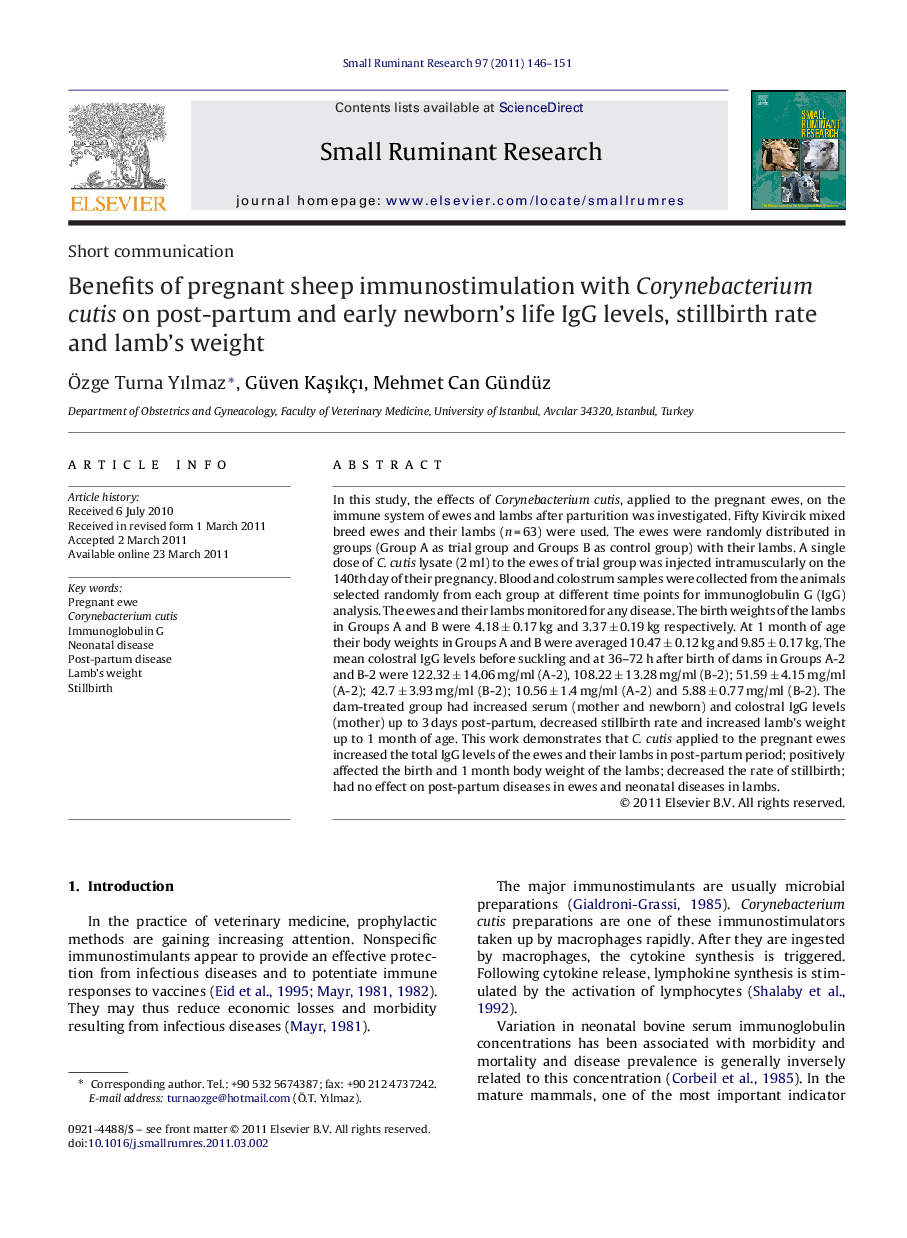| Article ID | Journal | Published Year | Pages | File Type |
|---|---|---|---|---|
| 2457338 | Small Ruminant Research | 2011 | 6 Pages |
Abstract
In this study, the effects of Corynebacterium cutis, applied to the pregnant ewes, on the immune system of ewes and lambs after parturition was investigated. Fifty Kivircik mixed breed ewes and their lambs (n = 63) were used. The ewes were randomly distributed in groups (Group A as trial group and Groups B as control group) with their lambs. A single dose of C. cutis lysate (2 ml) to the ewes of trial group was injected intramuscularly on the 140th day of their pregnancy. Blood and colostrum samples were collected from the animals selected randomly from each group at different time points for immunoglobulin G (IgG) analysis. The ewes and their lambs monitored for any disease. The birth weights of the lambs in Groups A and B were 4.18 ± 0.17 kg and 3.37 ± 0.19 kg respectively. At 1 month of age their body weights in Groups A and B were averaged 10.47 ± 0.12 kg and 9.85 ± 0.17 kg. The mean colostral IgG levels before suckling and at 36-72 h after birth of dams in Groups A-2 and B-2 were 122.32 ± 14.06 mg/ml (A-2), 108.22 ± 13.28 mg/ml (B-2); 51.59 ± 4.15 mg/ml (A-2); 42.7 ± 3.93 mg/ml (B-2); 10.56 ± 1.4 mg/ml (A-2) and 5.88 ± 0.77 mg/ml (B-2). The dam-treated group had increased serum (mother and newborn) and colostral IgG levels (mother) up to 3 days post-partum, decreased stillbirth rate and increased lamb's weight up to 1 month of age. This work demonstrates that C. cutis applied to the pregnant ewes increased the total IgG levels of the ewes and their lambs in post-partum period; positively affected the birth and 1 month body weight of the lambs; decreased the rate of stillbirth; had no effect on post-partum diseases in ewes and neonatal diseases in lambs.
Related Topics
Life Sciences
Agricultural and Biological Sciences
Animal Science and Zoology
Authors
Ãzge Turna Yılmaz, Güven KaÅıkçı, Mehmet Can Gündüz,
